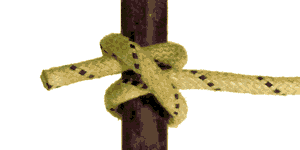
Knots
These knots are arranged according to the three qualifications of the Pathfinder Cruise.
Note that they are shown 'loose' (for clarity), but most need to be pulled tight to be secure.
Ordinary Seaman
Reef Knot
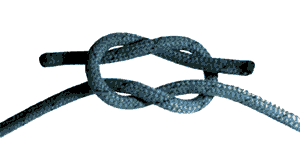
For tying together two ends of the same rope
With the two ends pointing towards each other, put right over left and tuck under, then left over right and tuck under (through the middle)
Sheet Bend
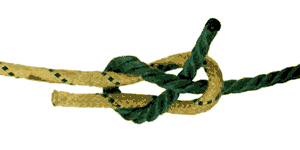
For tying together two ropes of roughly similar size
Make a 'flat' loop in the end of one rope (the thicker one, if different), bring the end of the other rope up through the loop towards the standing end of the first rope, then pass it right around the back of the loop and finally under itself (not through the loop).
Note: you can also use the eye spliced in the end of mooring warps, etc. as the loop.
Figure of Eight

Stopper Knot, to prevent the end of a rope (such as a sheet) going through a block
Place the end of the rope over the standing end to make a small loop, tuck it round the back and then down through the loop.
Able Seaman
Clove Hitch
For temporarily attaching to a spar or post (not for a permanent mooring)

(Round a Spar) Loop around, cross over the standing end, then round again in the same direction and finally under itself beside where it crossed over the standing end.
(On a Post) Twist the rope into a loop with the standing end (usually attached to the boat) on top, put that on the post, then twist a second loop exactly the same way and drop that on the post above the first loop.
Bowline
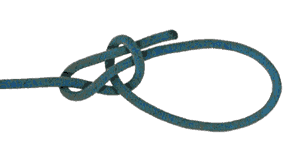
To make a secure loop in the end of a rope
Make a small loop with the standing end underneath,
pass the free end up through the loop, round the back of
the standing end and back down through the small loop.
Pull tight by pulling the free end with the side of the
loop away from the standing end.
Round Turn and Two Half Hitches
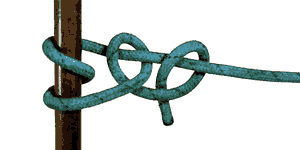
For securing a rope to any solid item (post, ring or spar); ideal for mooring
This knot's name describes how to tie it. Pass the end of the rope round, round again; then make a half-hitch onto the standing end by placing the end over it and tucking through between itself and the round turn, repeat for a second half hitch.
Leading Seaman
Highwayman's Hitch
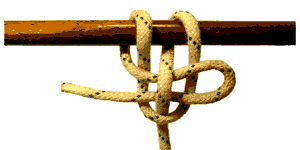
To tie a line to something so that it can be undone very quickly (but not for significant loads)
This is tied with three loops - pass one loop behind what you are tying to, make a loop in the standing end and pass that through the first loop, then make a loop in the free end and pass that through the second loop.
Rolling Hitch
To pull along a spar or rope

Pass the end of the rope round, laying over itself;
round and over the standing end again, round once more in the
same direction the other side of the standing end and finally
under itself beside where it crossed over.
Pull in the direction of the two loops.
The more common version of this knot is shown - for the variant sometimes known as a 'Magnus Hitch', you don't lay over the standing end with the first loop, but only cross over it after making the second loop. If in doubt, ask Cap'n Jeremy to show you.
Double Sheet Bend
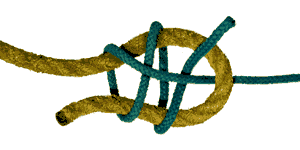
For tying together two ropes of very different sizes
Make a 'flat' loop in the end of the thicker rope, bring the end of the thin rope up through the loop towards the standing end of the first rope, then pass it right around the back of the loop and under itself. Then take it round the back another time and under itself again, close to where it first came up through the loop.
Fisherman's Bend
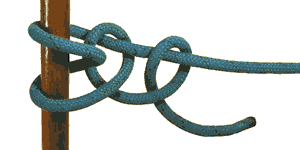
For securing a rope very firmly to a solid item, such as an anchor
This is similar to the round turn and two half hitches, except that the first half hitch also goes under the middle of the round turn (but the second half hitch doesn't).
This is the only knot shown here which cannot easily be undone after it has been pulled very tight - it is designed to jam solid under load.